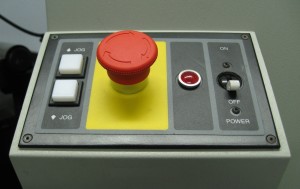The least utilized part of the building commissioning process is the act of going back to a completed project and proving the monetary value of the commissioning work. This is an added cost but is very important for the building owner as well as the commissioning agent to ensure changes were implemented correctly. Fortunately, we have many affordable options these days to measure the energy consumption of our building equipment before and after our commissioning work. Armed with this real-life performance data, we can present the owner with hard evidence of the value of fine-tuning a building’s mechanical system. We recently did such a review of two buildings which underwent building commissioning in the past 18 months. By analyzing the data, we found savings for these buildings range from 18-30% with relatively short payback periods.
Building commissioning is the process of ensuring that building HVAC and electrical systems all work together effectively. Commissioning analyzes the systems so that they aren’t fighting each other, operate smoothly so they don’t break down prematurely, and provide the service (temperature, air quality, and light quality) the owner expects.
How to Measure Performance
Prior to a commissioning job of an existing building (retro-commissioning), we install meters on the equipment that contributes the most energy consumption in the building or the equipment we are targeting for commissioning. This data collection allows us to evaluate how often the equipment is being used and the associated power draw. Metering for 14-30 days typically captures the nuances of the equipment so that we can calculate the energy consumption and judge if there are opportunities for performance improvement. This metering also establishes the baseline (how was the equipment performing prior to the changes) against which we will calculate the value of the retrocommissioning savings.
After retro-commissioning is completed on a facility, we allow a few months of operation to let things “settle out.” This allows for any program adjustments to be made; for example, if night time setbacks were enacted, adjustments might need to be made as to the depth of these setbacks. After this adjustment period, we either meter the same equipment again or use BMS data of the equipment. If the project was big enough to be noticeable on the utility bill, we analyze the utility bills for savings instead of metering or using BMS data. Savings are the difference between the normalized pre- and post-installation data. Both of the projects described in this blog post had utility meters on the central plants and a utility bill analysis was conducted.
An Example of Proven Energy Savings
The commercial buildings I am highlighting in this post are approximately 60,000 square foot brick buildings from the mid-1800s that have a central cooling/heating plant and individual air handling units to the tenant spaces. The commissioning work of the first building consisted of installing new variable speed drives (VSDs) on the main water and cooling tower piping, new BMS controls on the central plant, improved boiler water flow, and a reduction in make-up air to the mechanical room. The electrical savings for this project are shown in the following graph and represent a 30% energy consumption reduction.
The second building had a new BMS package installed in the central plant and a portion of the air handling units was commissioned. The issue in this building was that the HVAC equipment was severely out of control (simultaneous heating and cooling in various areas) and there were many spaces with comfort issues. Even though not all of the air handling units are yet on the BMS, this project saved 18% in energy costs (both gas and electric), as is shown in the following chart.
Additional Value of the Extra Savings – Non-Energy Benefits
In addition to noticeable energy savings, the owners also commented on the reduction in emergency maintenance calls, as well as tenant comfort issues. This directly impacts the bottom line of the owner’s business and should not be underestimated.






